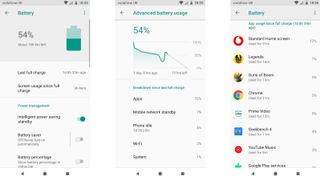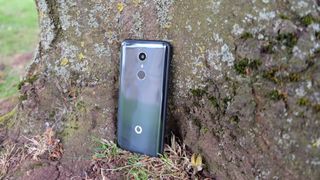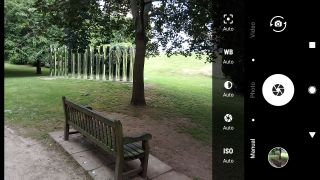Why you can trust TechRadar
Battery life
- 2,900mAh battery is quite large given the specs
- Video really punishes the battery
The Vodafone Smart N9 comes with a 2,900mAh battery, which is really quite large for a phone of this spec. It’s not far off the size of battery we expect from flagship phones with their 2GHz octa-core chipsets and their QHD displays.
It’s certainly a lot larger than the Vodafone Smart N8’s 2,400mAh battery, at any rate. Of course, with a significantly larger display, there’s a lot more call for that power.
This generally balances out for the expected all-day performance, particularly when your usage is light to moderate. We’re talking calls, texts, emails and some light web browsing.

However, hitting the Smart N9 with more intensive tasks really takes its toll. The standard TechRadar battery test involves playing a 90-minute 720p looping video with the screen brightness set to full, and the N9 lost 24% of its charge on average.
In fairness, most budget phones do struggle with this task. it’s actually an improvement on last year’s Smart N8, which lost 28%. The similarly-priced Nokia 2 lost just 15% in this test, though that phone has a freakishly large battery. Meanwhile, the still-available (at a knock-down price) Moto G5 lost 22%.
You won’t be getting any more than average battery performance from the Vodafone Smart N9, and you’re best served going lightly on the media playback.
Camera
- 13MP camera isn’t capable of much
- Slow camera response
Almost refreshingly for a budget phone, Vodafone doesn’t make any grand claims about the Smart N9’s photographic capabilities.
There are no gimmicky specs either, no dual-lens cameras or flimsy focus effects. This is a single-lens 13MP camera, plain and simple.
Unfortunately, that’s about all that can be said for the N9’s camera, beyond the fact that it offers a fairly clean and intuitive UI and the option of Pro controls.

Even then, the speed of the actual camera app and the response time between pressing the shutter button and a picture being taken is pretty sub-standard. Good luck capturing anything in motion, too.
The quality of the images it captures isn’t very good at all, either. In that respect, there appears to have been little improvement since the Vodafone Smart N8.
Even in decent natural lighting, images tend to look flat and dull, with colours and details smudging together. Bright areas tend to be overexposed, too.

There is a manual HDR mode that can be activated with a control situated to the left of the viewfinder, which certainly improves things quite a bit. That said, you can almost hear the cogs working as the N9’s weak chipset works furiously to process the visual data. Speedy it is not.
Deprive the camera of significant light, and the shots are almost not worth taking. The N9’s autofocus struggles to lock on in these conditions, and the results are murky and blurry.
The one notable improvement over the Smart N8 comes from the front-facing camera, which this year is an 8MP example with a wide-angle lens. This means that you can squeeze a lot more people and/or scenery into your selfies, which will doubtless appeal to the kind of (young) people who might be drawn in by that low price.
It’s a rare positive in a pretty poor camera offering. As with the N8, it’s hardly a surprise or a disgrace that the N9’s camera offering is bad. However, that 30% price bump makes it a little harder to overlook.
Camera samples







Current page: Battery life and camera
Prev Page Introduction, key features and design Next Page Anything else I should know?